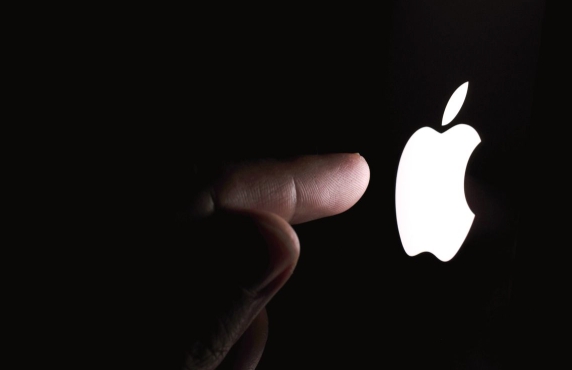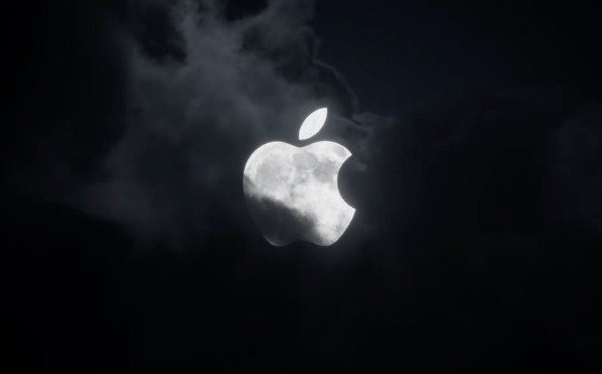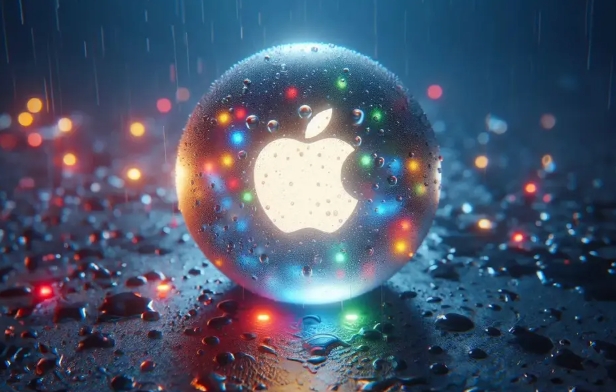 Computer Tutorials
Computer Tutorials
 System Installation
System Installation
 macOS could not be installed because the path /System/Installation/Packages/OSInstall.mpkg appears to be missing or damaged
macOS could not be installed because the path /System/Installation/Packages/OSInstall.mpkg appears to be missing or damaged
macOS could not be installed because the path /System/Installation/Packages/OSInstall.mpkg appears to be missing or damaged
Jul 06, 2025 am 01:04 AMWhen encountering the prompt "macOS could not be installed because the path /System/Installation/Packages/OSInstall.mpkg appears to be missing or damaged" it means that the system installation package is missing or damaged during installation or upgrading macOS, which is common in old version recovery images, third-party boot disks or disk structure exceptions; solutions include: 1. Confirm whether the boot media is complete, it is recommended to use the official createinstallmedia command to create a boot disk and check whether OSInstall.mpkg exists; 2. Select "Reinstall macOS" from recovery mode to automatically download the necessary files; 3. Check the disk format and partition structure, ensure that you use "Mac OS Extensions (Login)" and GUID partition table, and verify the disk logic errors; 4. Use the Internet Recovery (Option Command R) Loads the recovery environment and installer from the Apple server.

I encountered the prompt "macOS could not be installed because the path /System/Installation/Packages/OSInstall.mpkg appears to be missing or damaged" indicating that you encountered the problem of missing or damaged system installation packages when trying to install or upgrade macOS. This problem usually occurs when using old versions of recovery images, third-party boot disks, or disk structure abnormalities.

Here are some common troubleshooting and solutions that can help you deal with this situation:

1. Confirm whether the startup media is complete
If you are installing macOS via USB or other external devices, first make sure your boot disk is properly made. Many third-party tools (such as BalenaEtcher or some homemade startup disk scripts) may not copy all key files correctly, resulting in the missing OSInstall.mpkg .
suggestion:

- Use the officially recommended method to create a startup disk, such as the
createinstallmediacommand provided by Apple. - Check whether the
OSInstall.mpkgfile exists in the/Packagesfolder in the startup disk. - If you are not sure, you can remake the boot disk once to make sure that you are choosing a complete and uncorrupted macOS installer image.
2. Try to reinstall from macOS recovery mode
If your current Mac can enter recovery mode (hold Command R when restarting), try using the built-in "Reinstall macOS" feature instead of running the installer manually.
Operation steps:
- After entering recovery mode, select the "Reinstall macOS" option.
- The system will automatically connect to Apple's server to download the necessary installation files, including
OSInstall.mpkg. - This method bypasses the integrity of the local boot disk and is suitable for better network environments.
Note: This method requires a stable internet connection as it may download hundreds of MB to several GB of data.
3. Check the disk format and partition structure
Sometimes, wrong disk format can also lead to installation failure. Especially when you try to install macOS on non-Apple format disks, or use incompatible partition tables (such as GPT and MBR mixed use), it may also lead to problems with path finding.
suggestion:
- Use Disk Utility to format the target disk to "Mac OS Extensions (Logistics)" and use the GUID partition table.
- If you are a dual system user, make sure that the macOS partition has not been rewritten by other operating systems.
- Run Disk Utility > First Assistance > Verify Disk in recovery mode to check for logical errors.
4. Network installation (Internet Recovery) as an alternative
If you suspect there are problems with the local recovery partition or boot disk, you can try Internet Recovery. This will directly load the recovery environment and installer from Apple's server.
How to operate:
- Restart the Mac and hold Option Command R at startup.
- Wait for a few minutes until the language selection interface appears.
- After entering, select "Reinstall macOS".
This method depends on network downloads, and the speed depends on the Apple CDN nodes in your region. It is sometimes slower, but has high reliability.
Basically these are the methods. You can check whether the boot disk is complete according to your own situation, and then try recovery mode or network installation. Most of this type of problem is caused by incomplete installation source. As long as the path is correct and the file exists, it can generally be solved smoothly.
The above is the detailed content of macOS could not be installed because the path /System/Installation/Packages/OSInstall.mpkg appears to be missing or damaged. For more information, please follow other related articles on the PHP Chinese website!

Hot AI Tools

Undress AI Tool
Undress images for free

Undresser.AI Undress
AI-powered app for creating realistic nude photos

AI Clothes Remover
Online AI tool for removing clothes from photos.

Clothoff.io
AI clothes remover

Video Face Swap
Swap faces in any video effortlessly with our completely free AI face swap tool!

Hot Article

Hot Tools

Notepad++7.3.1
Easy-to-use and free code editor

SublimeText3 Chinese version
Chinese version, very easy to use

Zend Studio 13.0.1
Powerful PHP integrated development environment

Dreamweaver CS6
Visual web development tools

SublimeText3 Mac version
God-level code editing software (SublimeText3)

Hot Topics
 macOS installer is damaged and can't be used
Jun 28, 2025 am 12:01 AM
macOS installer is damaged and can't be used
Jun 28, 2025 am 12:01 AM
When you encounter the prompt "macOS installer is corrupted and cannot be used", the problem is usually not that the installation package itself is corrupted, but that there is an error in the verification mechanism or storage method. 1. Re-download the macOS installer, and priority is obtained from Apple's official channels to ensure integrity; 2. Turn off the installation verification in SIP, enter the csrutildisable command through the terminal and temporarily close the verification and restart the installation; 3. Check whether the USB boot disk is made correctly. It is recommended to use the createinstallmedia command and ensure that the USB disk format is MacOS extension; 4. Correct the time and date settings, adjust the time through the date command in the recovery mode to avoid misjudgment of the certificate expiration. Most of them are after completing the above steps.
 How to partition hard drive for Windows installation
Jun 27, 2025 pm 02:27 PM
How to partition hard drive for Windows installation
Jun 27, 2025 pm 02:27 PM
Partitioning is crucial to installing the system. Good partitioning can improve the system operation efficiency and data management convenience. First of all, you need to know that there are up to 4 main partitions, and logical partitions are required if there are more than UEFI. The new computer recommends that the GPT format be started with UEFI, and the old machine uses MBR; the system disk is reserved at least 60GB. It is recommended that home or office users be divided into 2 to 3 zones: system disk (60 to 100GB for disk C), data disk (remaining space for disk D), optional backup/tool ??disk (approximately 50GB for disk E), dual systems require additional partitions. During installation, operate the partition on the "Custom Installation" page, and be careful to delete the old system partition to avoid confusion. In terms of details, the default NTFS format is maintained, the SSD is turned on AHCI mode, partition first and then install the system, and disk management can be used to adjust the partition size but avoid it.
 macOS installer won't accept my password
Jun 29, 2025 am 12:14 AM
macOS installer won't accept my password
Jun 29, 2025 am 12:14 AM
The answer to the question is that the password error prompt may be caused by keyboard layout, case recognition, or installer source. The macOS installation interface uses an American English keyboard by default. The input of non-English keyboards may not match. It is recommended to switch layouts or avoid special characters; the password is case-sensitive, and it is recommended to check the CapsLock status or try all lowercase; if the installer comes from another Mac, you need to enter the Mac password to make the installer; you can also try to re-download the installer through recovery mode, confirm the administrator account identity, or format the disk with disk tools first.
 How to dual boot Windows 11 and Ubuntu
Jul 01, 2025 am 12:08 AM
How to dual boot Windows 11 and Ubuntu
Jul 01, 2025 am 12:08 AM
When installing dual systems, you need to pay attention to partitioning, installation order and BIOS settings. 1. Partition preparation: Use disk management tools to compress at least 25GB (50GB or more) of unallocated space to Ubuntu without formatting; 2. Make a boot U disk: Use Rufus to write Ubuntu ISO to at least 8GB U disk; 3. BIOS settings: Restart and enter the BIOS (usually press F2, Del or Esc), turn off SecureBoot, and set the U disk as the first boot item; 4. Install Ubuntu: Select "Somethingelse" custom partition, create a new ext4 mount point/ and occupy the remaining space, and build a swap partition equal to the memory size, boot and add
 What is the difference between macOS Recovery and Internet Recovery?
Jul 02, 2025 am 12:24 AM
What is the difference between macOS Recovery and Internet Recovery?
Jul 02, 2025 am 12:24 AM
macOSRecoveryisabuilt-inrecoverysystemonahiddenpartitionofyourMac’sstartupdisk,providingtoolslikeDiskUtility,Terminal,andmacOSreinstallation.1.Itloadsquicklyfromlocalstorage.2.Requiresafunctioninginternaldrive.3.ToolsincludereinstallingmacOS,repairin
 Can I use my Windows 7 product key to activate a new Windows 10 installation
Jul 02, 2025 am 12:15 AM
Can I use my Windows 7 product key to activate a new Windows 10 installation
Jul 02, 2025 am 12:15 AM
No,youcannotdirectlyuseaWindows7productkeytoactivateWindows10.1.Windowsproductkeysareversion-specific,soaWindows7keyonlyworksforWindows7.2.IfyourPCwasupgradedfromWindows7toWindows10beforesupportended,itmayhaveadigitallicenselinkedtothehardware,allowi
 How to install Windows 10 in VirtualBox
Jun 30, 2025 am 12:02 AM
How to install Windows 10 in VirtualBox
Jun 30, 2025 am 12:02 AM
The key steps to install Windows 10 to VirtualBox are as follows: 1. Prepare VirtualBox, Windows 10 ISO images and system resources; 2. Create a virtual machine and set the name, type, memory and virtual hard disk; 3. Mount the ISO file and start the installation process; 4. After the installation is completed, the enhancement function expansion package is inserted to improve performance and operating experience. The entire process requires attention to hardware compatibility, BIOS settings and installation of necessary dependencies to ensure smooth installation.
 Minimum system requirements for Windows 11
Jul 03, 2025 am 12:48 AM
Minimum system requirements for Windows 11
Jul 03, 2025 am 12:48 AM
The minimum hardware requirements of Windows 11 mainly include five aspects: 1. The processor must be from the sixth-generation Intel or Ryzen starting point or above, supports 64-bit, dual-core and above, the main frequency is not less than 1GHz, and is on the Microsoft support list; 2. At least 4GB of memory, but 8GB or higher is recommended to ensure smooth use; 3. At least 64GB of storage space, the system itself occupies about 25~30GB, and it is recommended to use SSD; 4. The TPM2.0 security module must be supported and enabled, many motherboards did not meet this condition before 2016; 5. Some users try to bypass the restricted installation may cause driver or update problems, and ordinary users do not recommend this.





